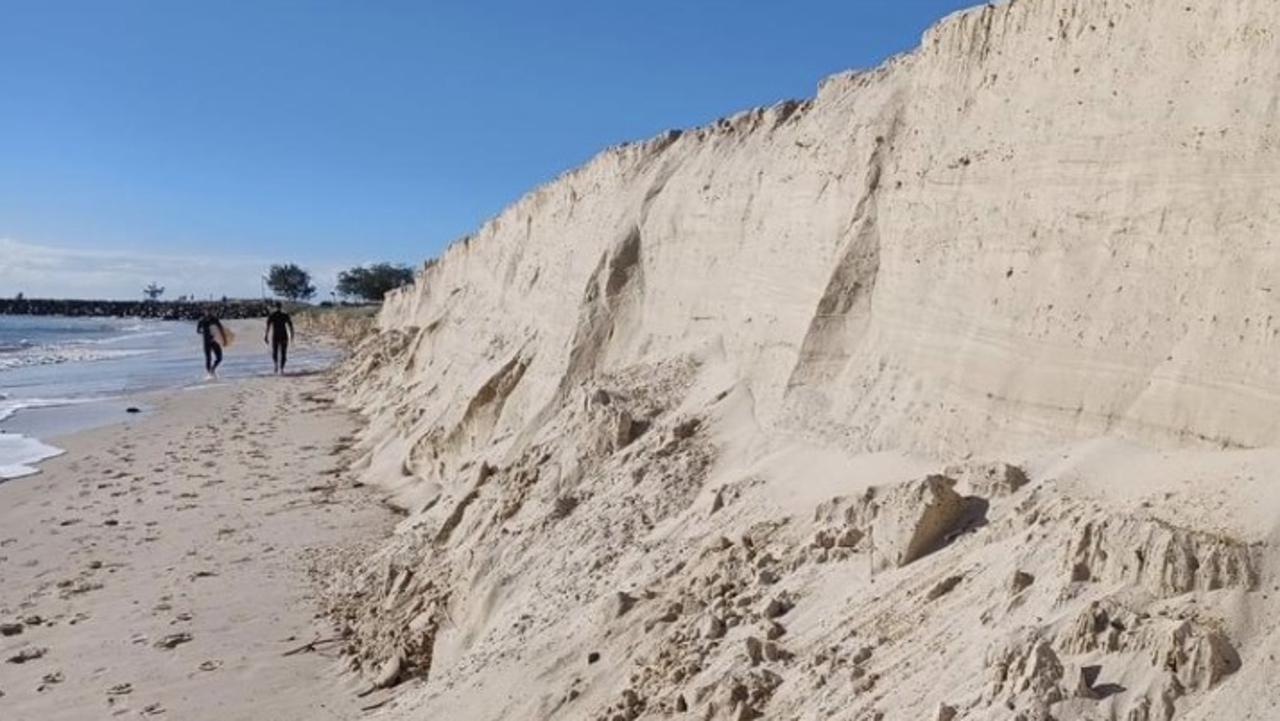Explained: Erosion on Tweed beaches and how council is examining the issue
There has been some striking erosion on Tweed’s beautiful beaches – but is it anything to worry about?

If you’ve walked Kingscliff Beach recently, you may have noticed some eye-catching erosion – but it’ll be a long while yet before the ever-changing Tweed coastline badly impacts properties.
Tweed Shire Council has commissioned a review to get more up to date data on erosion risks along the shire’s beaches.
Kingscliff Beach is a “very dynamic site” and “constantly eroding or accumulating sand, depending on prevailing ocean conditions”, a NSW Department of Planning and Environment spokesman said.

The council’s environment manager Jane Lofthouse said the recent erosion has been relatively minor – despite the stark images – and it’s to be expected for Kingscliff Beach.
“The beach is always either eroding or rebuilding dependent on the weather and sea conditions, “ she said.
Ms Lofthouse said Kingscliff Beach had a cyclic pattern of erosion and accretion (sand rebuilding).
“The sand on this part of the coastline moves from south to north and moves in pulses around the Cudgen Creek training walls … with large swells recently experienced along the NSW coast increasing erosion along the whole coastline,” she said.

According to the council, all private property boundaries adjacent to Kingscliff Beach are not expected to be vulnerable to erosion for more than 70 years.
However, the last coastal hazard study was done 10 years ago.
The council has now commissioned a review, a comprehensive coastal hazard assessment, to get more up to date data.

“The hazard assessment takes into account climate change-induced sea level rise and increased storminess and will be projected out to 100 years from present,” Ms Lofthouse said.
Beach erosion, cliff instability and inundation of low-lying coastal areas are under the microscope, with the community to be consulted over the next two years.
Coastal LGAs like the Tweed work with the NSW government to develop coastal management programs.

In recent years, 60,000 cubic metres of sand was dredged from the Tweed River entrance and Terranora Inlet and deposited on Kingscliff beach.
The curation helps to reduce the impact of big waves on the beach.
Without the “sand nourishment”, erosion events would increase in size and frequency.
Additionally, the Tweed Sand Bypassing initiative by the NSW and Queensland governments includes maintaining a safe entrance to the Tweed River and restoring and maintaining coastal sand drift to northern Gold Coast beaches.
Sand is collected from the south of the Tweed River Entrance, at Letitia Spit, and pumped under the river to the north.
The sand is transported by currents and waves to the Gold Coast beaches.





